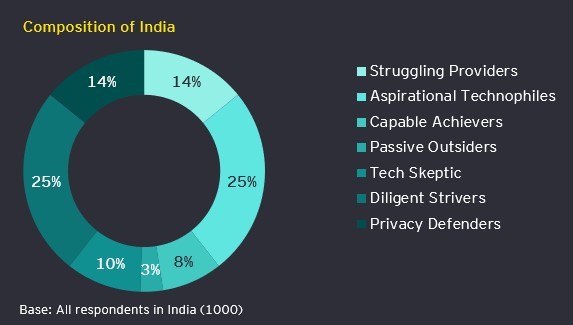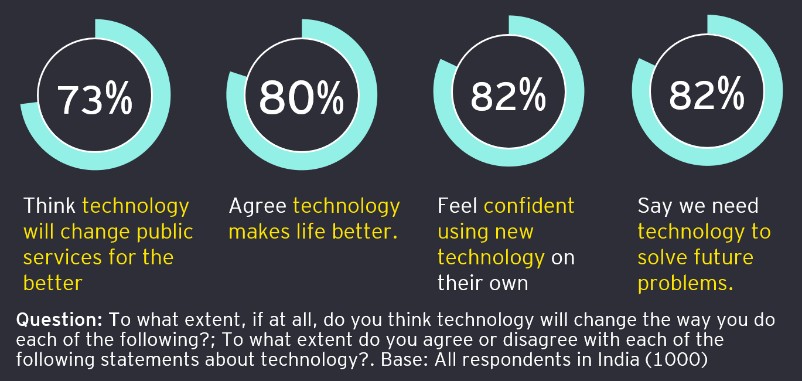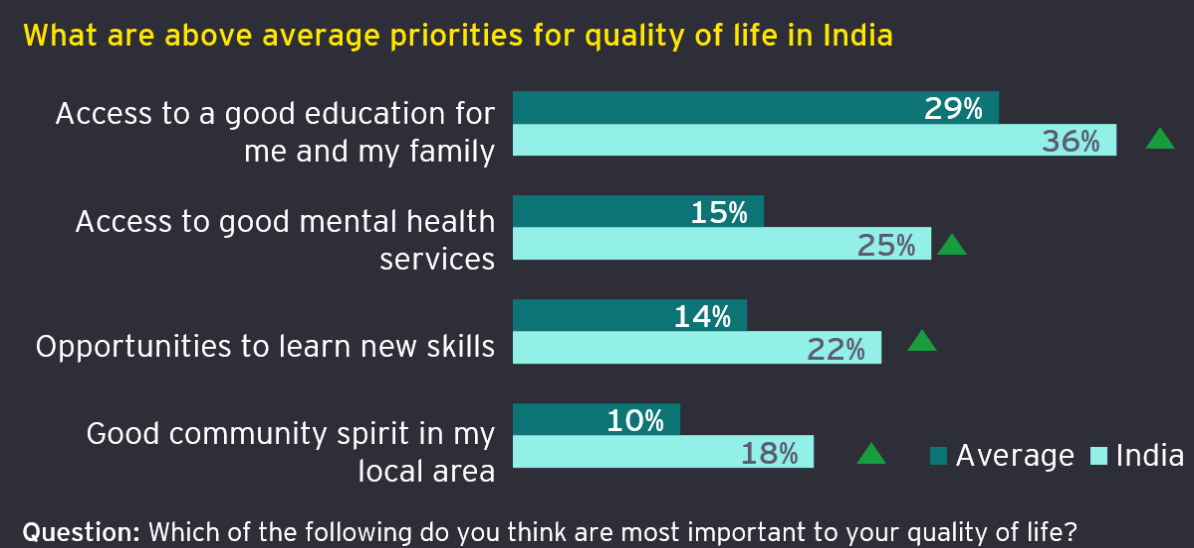Globally, while the survey reflects optimism that technology improves quality of life (according to 72% of respondents), there are significant concerns about its broader impact. Many believe that increased use of technology will potentially widen social inequalities, with 32% stating that technology will lead to greater social inequality and 34% stating that technology gives more power to those who are already rich and powerful. There are further concerns around the impact of increased reliance on technology as a means for communication on social cohesion. Globally, 32% of citizens believe technology will make people feel less connected to their communities. However, demand still exists to further develop people’s digital skills. 61% say they would be likely to use government training schemes that improve their digital skills if they were available.
Looking ahead to the future, according to the India respondents, healthcare services, availability of good jobs, clean air and green spaces (49%, 42%, 39% respectively) are amongst the most important to improve in their local area.
Impact of COVID-19
71% of the respondents think the COVID-19 pandemic will lead to greater use of technology in their daily lives in the future, 69% feel technology innovation will be more than ever before, while 63% believe that the reliance on domestically produced goods will be more compared to the pre-COVID era.
Use of public services
40% of the respondents feel that making more use of online and digital technologies in the provision of public services would make the biggest difference to the quality of public services they receive. 39% of the respondents stated that providing online resources for people to learn new skills or look for a new job and making many more government and public services available online, respectively, should be the key priorities for the government of India.
Digitization is here to stay in India
During the COVID-19 crisis, many have experienced the amazing potential of digitization to improve public services and maintain social connections. Even in India, we have seen that there is a broad appetite among citizens for more digitally enabled public services and many want to have more of a say in how they should be delivered. The government of India must harness data and technology to become more efficient and effective while covering the citizens at large.






